Genus
Cephalomanes See All Search SiteSpecies
javanicumSynonyms
- Trichomanes javanicum
Trade Names
Borneo fernTaxon Family
HymenophyllaceaeOrigin of Taxon
South-East Asia: Hainan, East and South Taiwan [India, Indonesia, Japan (Ryukyu Islands), Malaysia, Myanmar, New Guinea, Thailand, Vietnam].Growth Habit
Rosette, RhizomatousImages
-
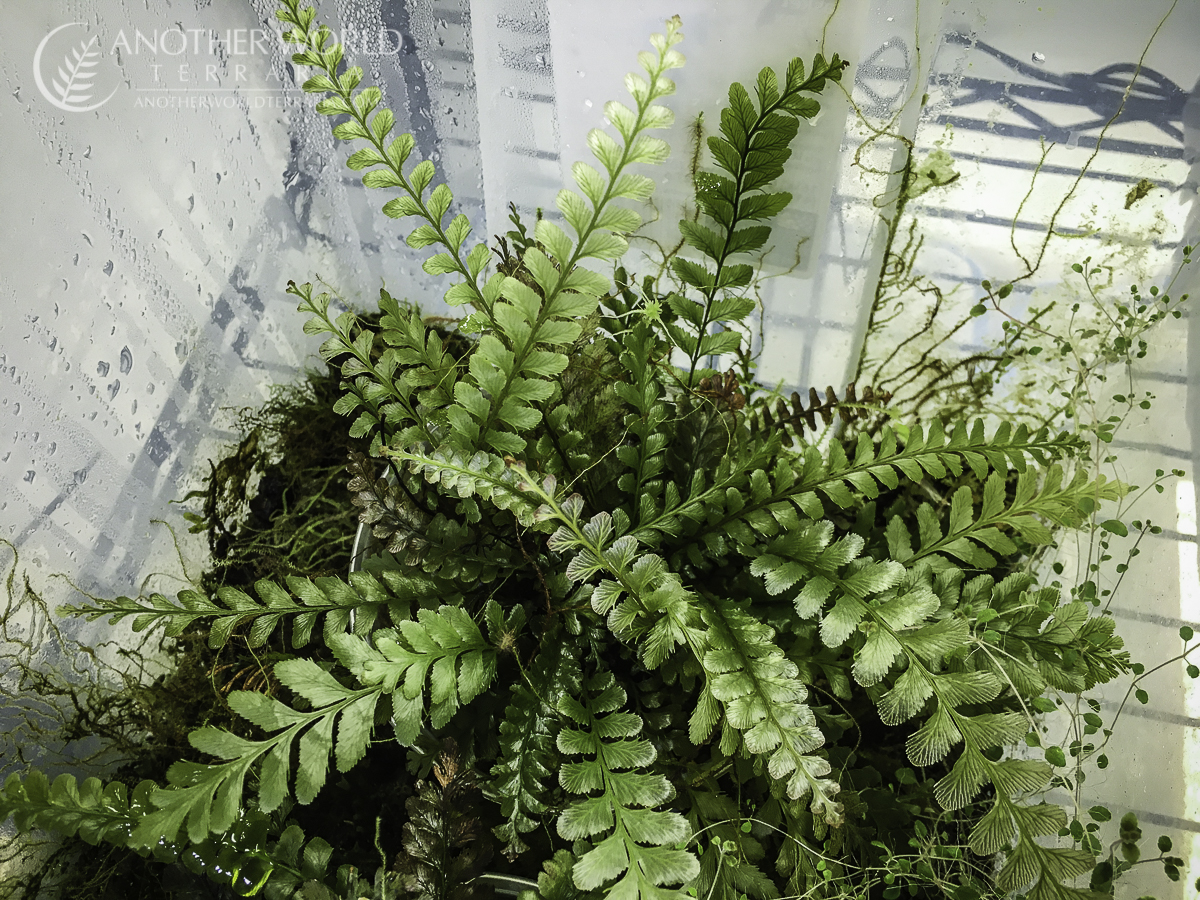
Cephalomanes javanicum in a filmy fern grow bin setup
-
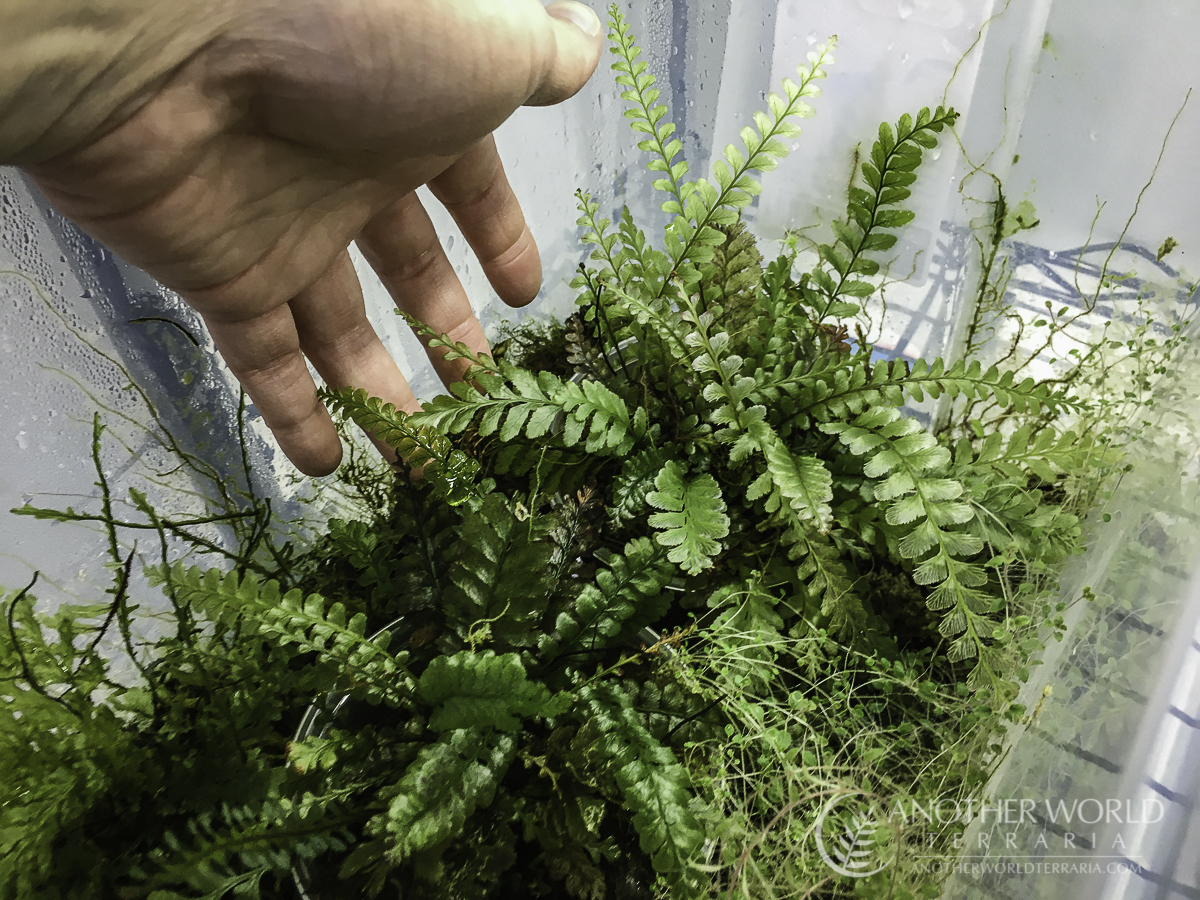
Cephalomanes javanicum in a filmy fern grow bin setup
-
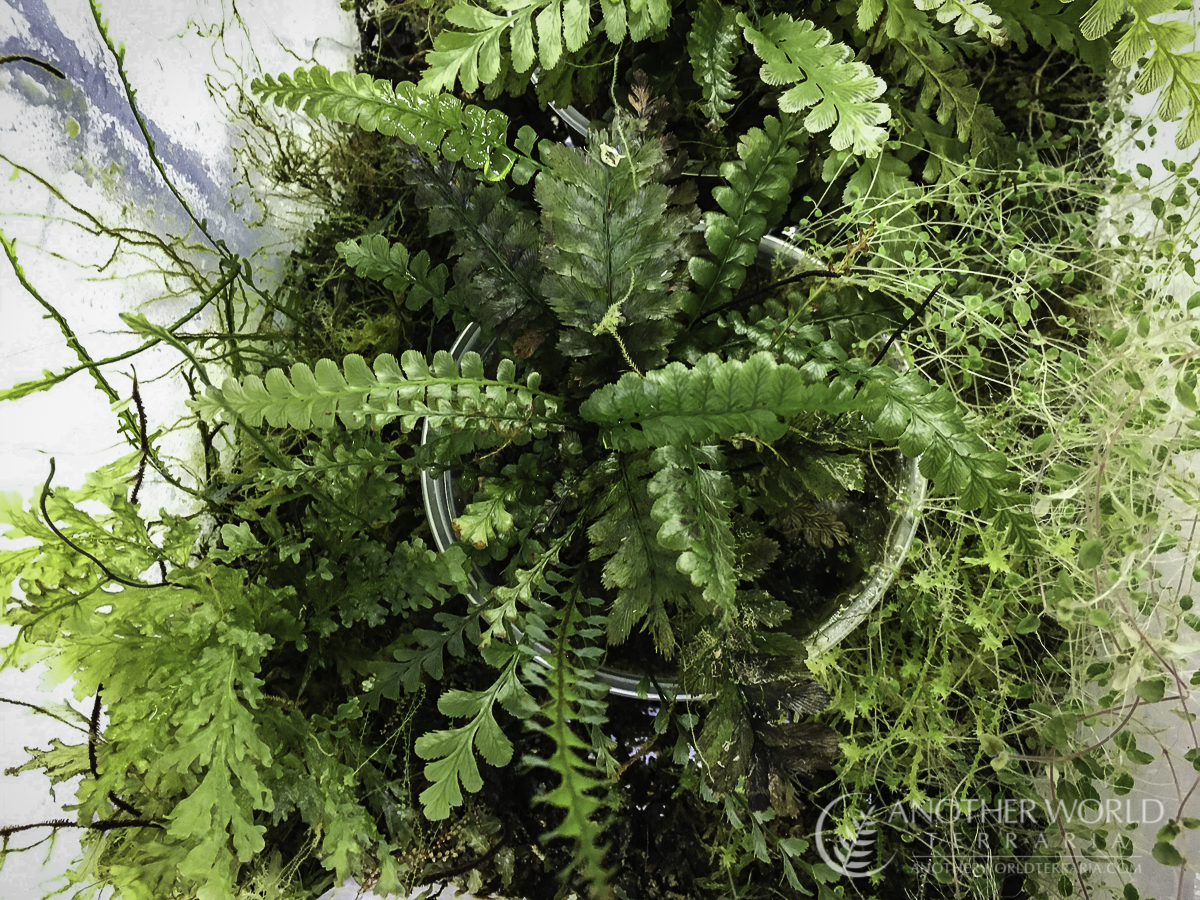
Cephalomanes javanicum in a filmy fern grow bin setup
-
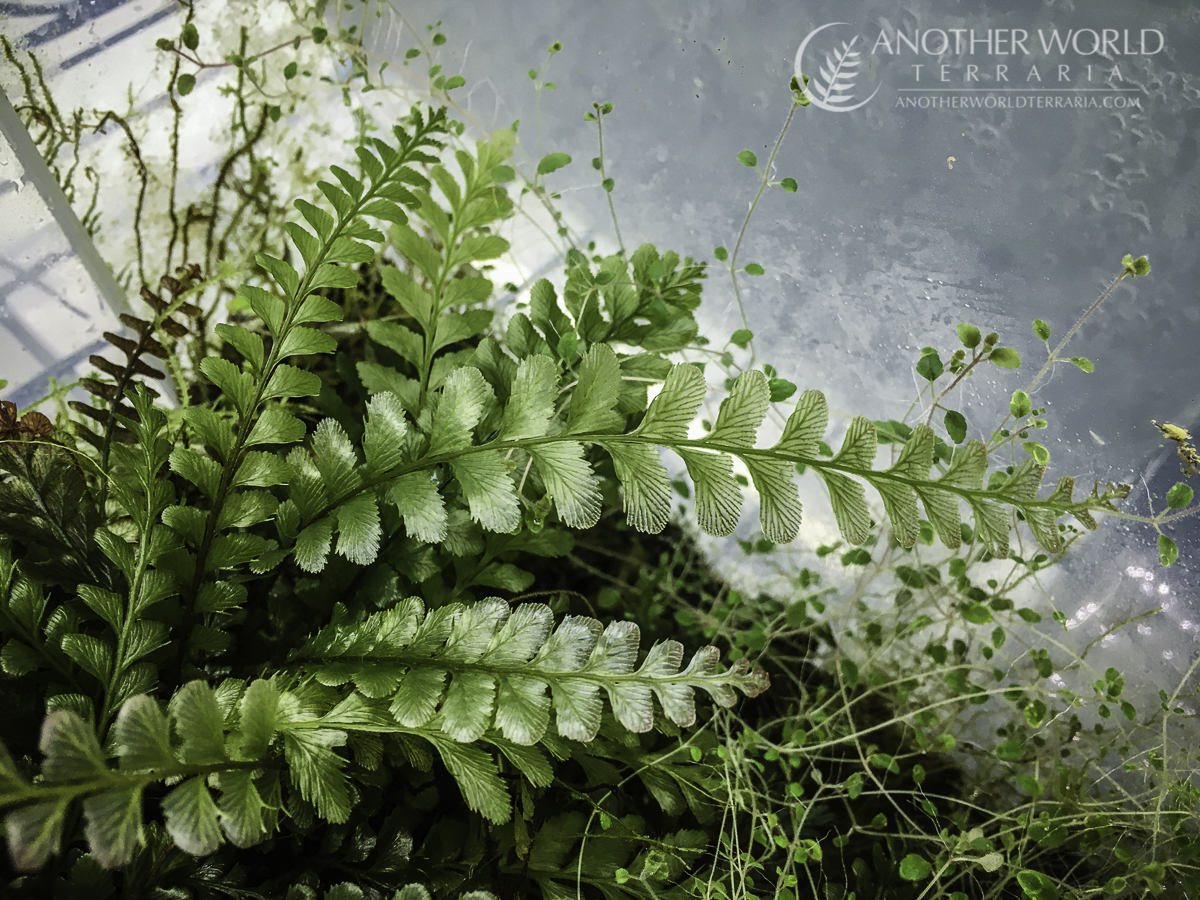
Cephalomanes javanicum frond detail
-
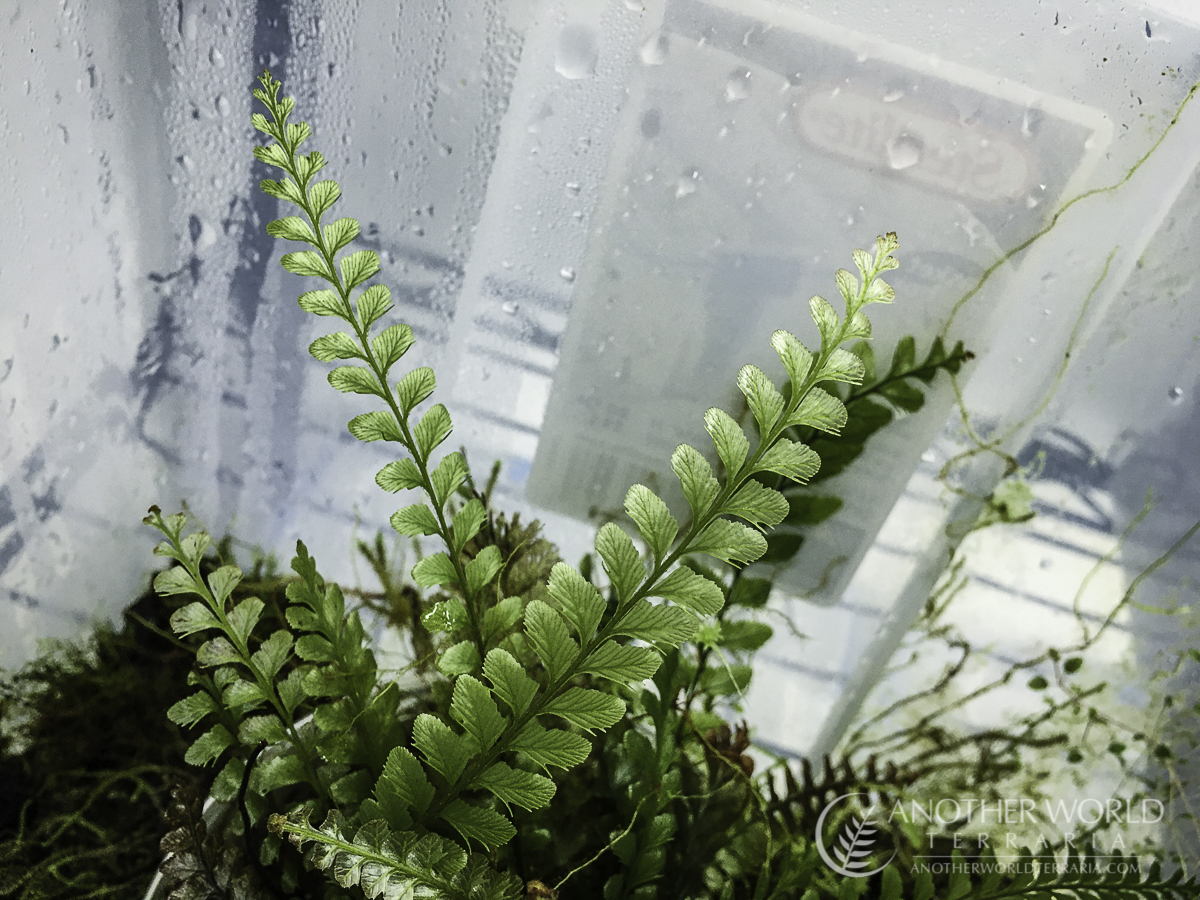
Cephalomanes javanicum frond detail
-
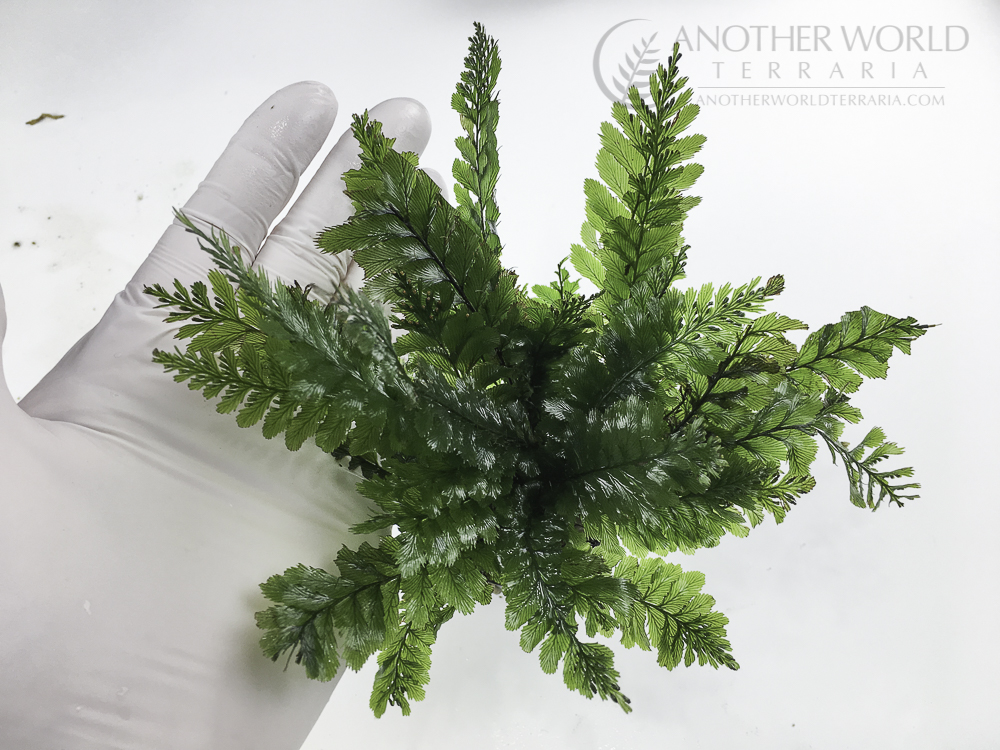
Cephalomanes javanicum plant next to a hand, for size reference
-
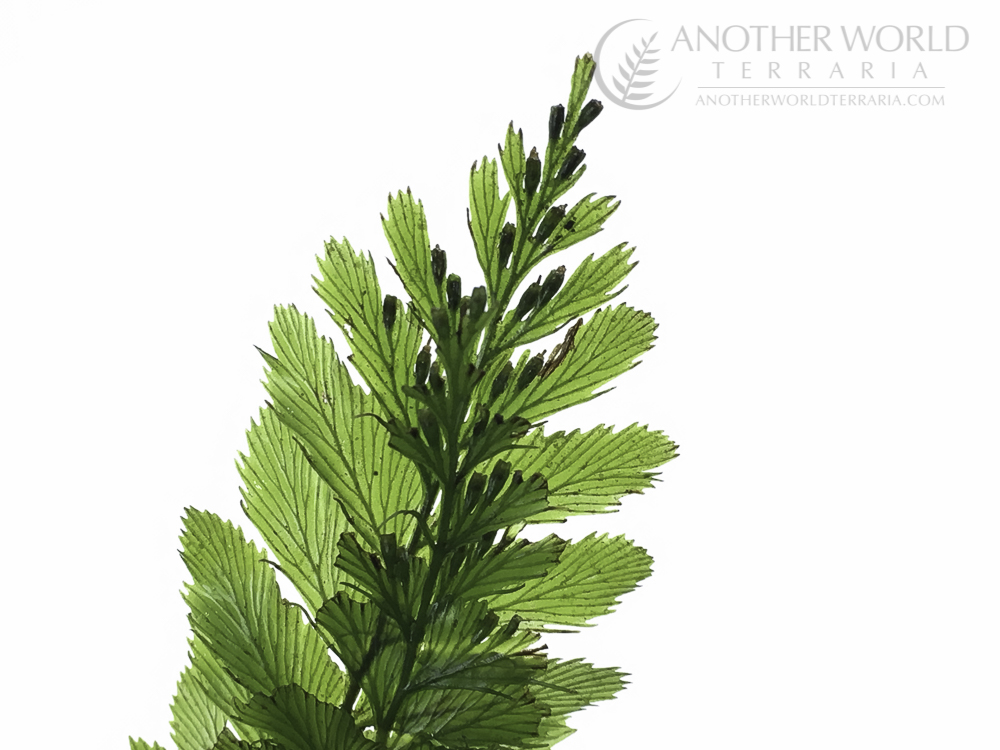
Close up of Cephalomanes javanicum frond, showing spore capsules and translucent pinna
-
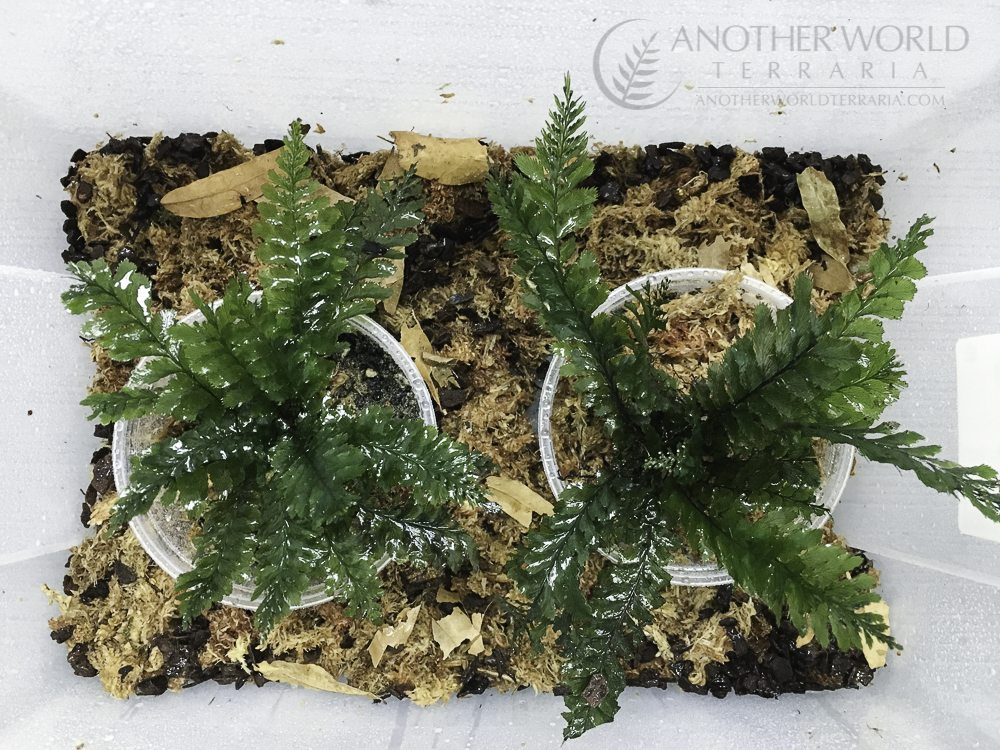
Cephalomanes javanicum plants in a freshly set up grow bin
-
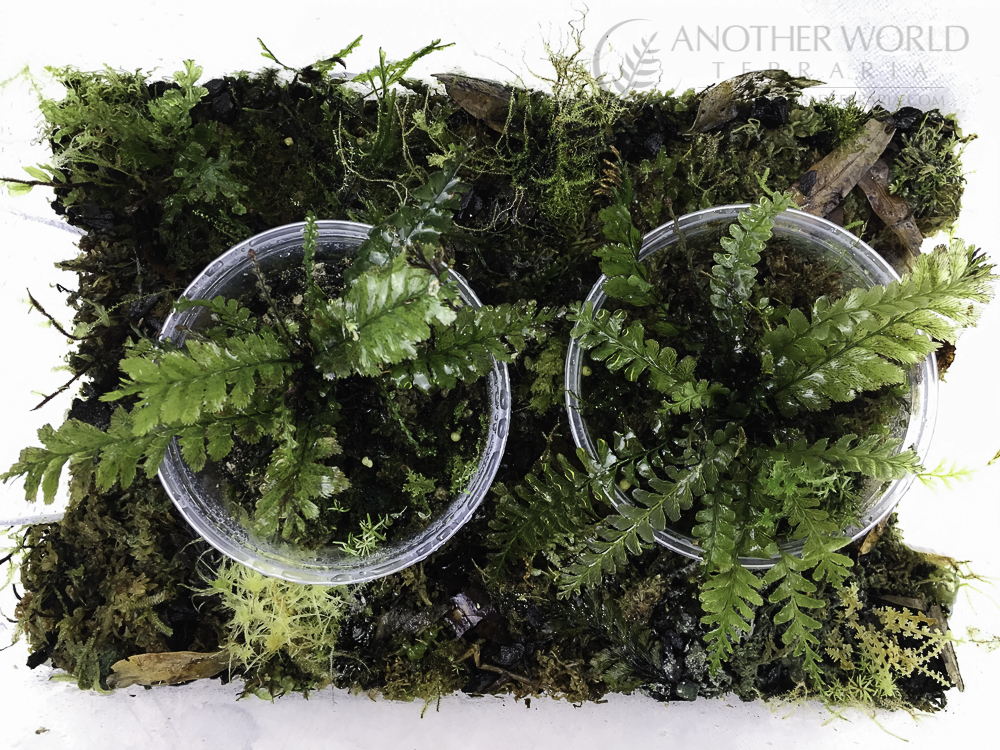
Cephalomanes javanicum plants in grow bin with other filmy ferns
-
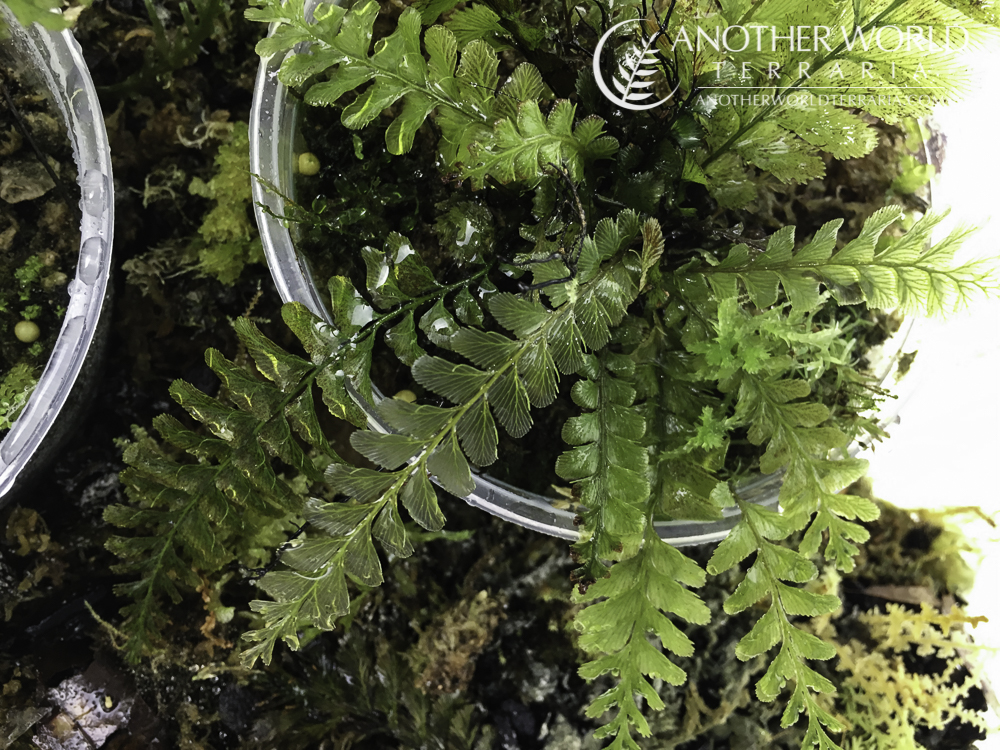
Cephalomanes javanicum plant
-
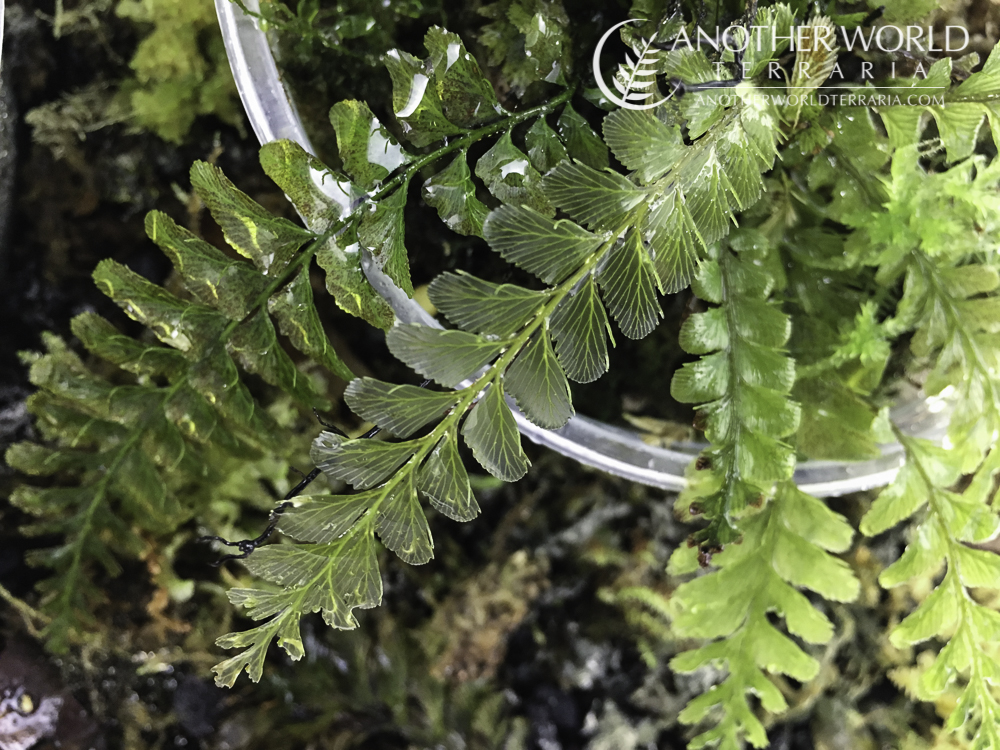
Cephalomanes javanicum fronds
-
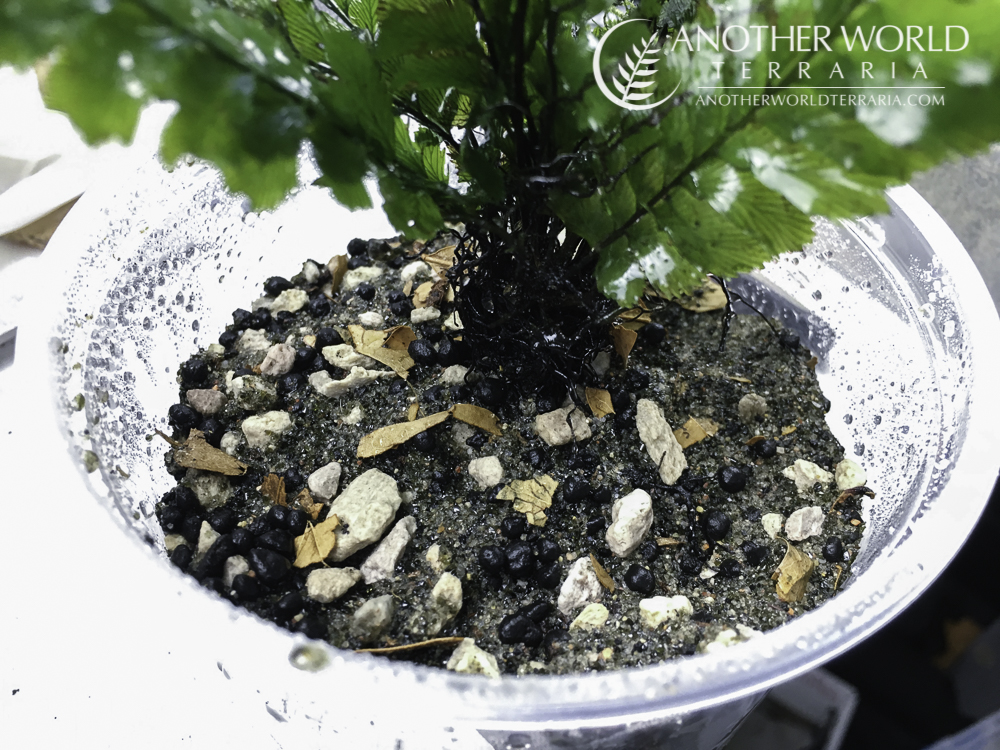
Substrate mix with potted Cephalomanes javanicum
-

Sphagnum moss layer around Cephalomanes javanicum
-
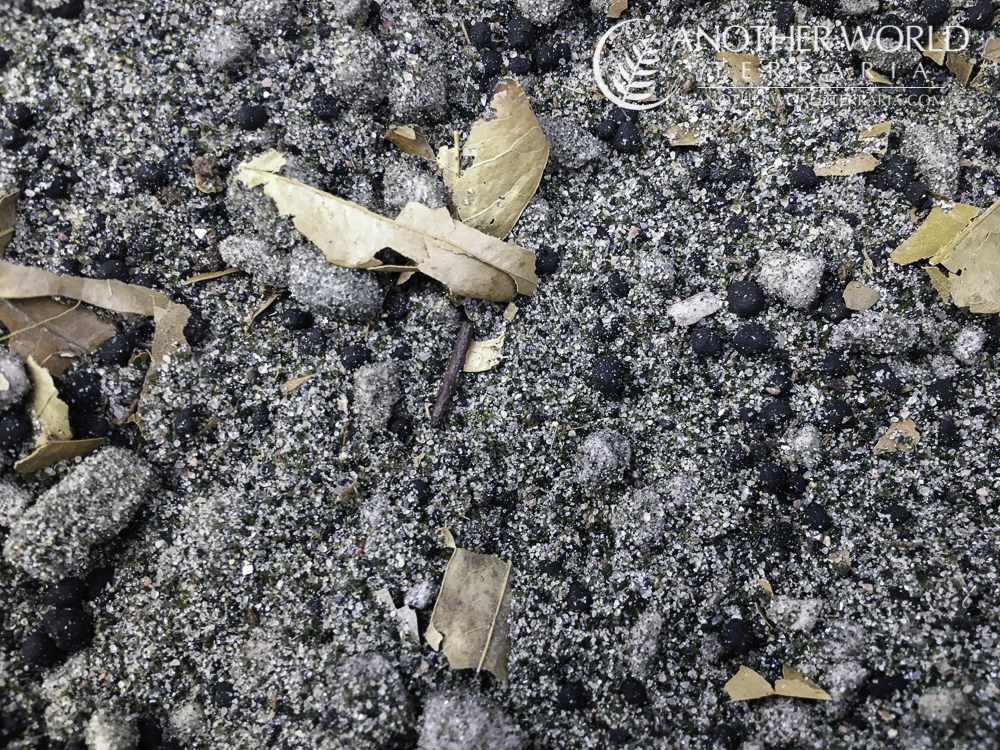
Substrate mix with sand, pumice, Fluval Stratum, and crushed willow-oak leaves
-
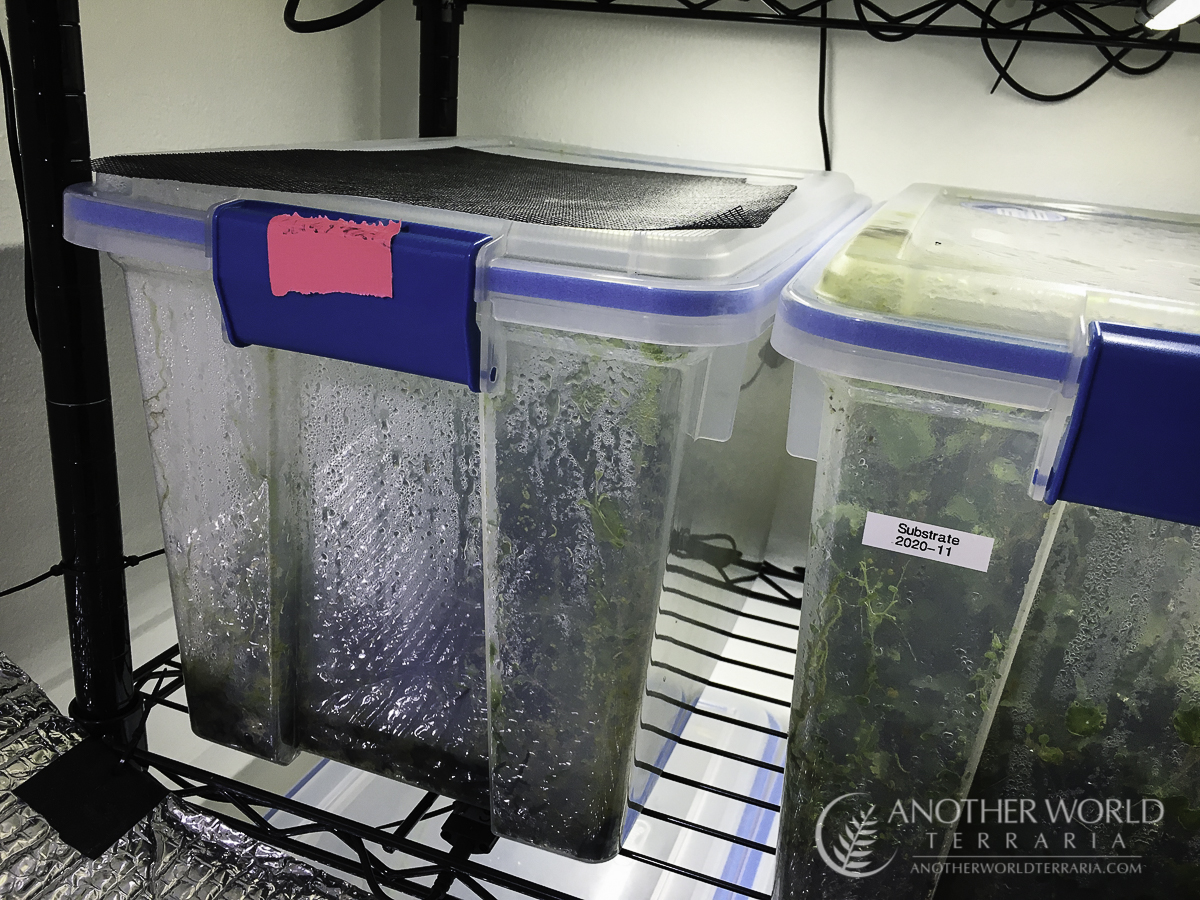
Filmy fern grow bin setup
-
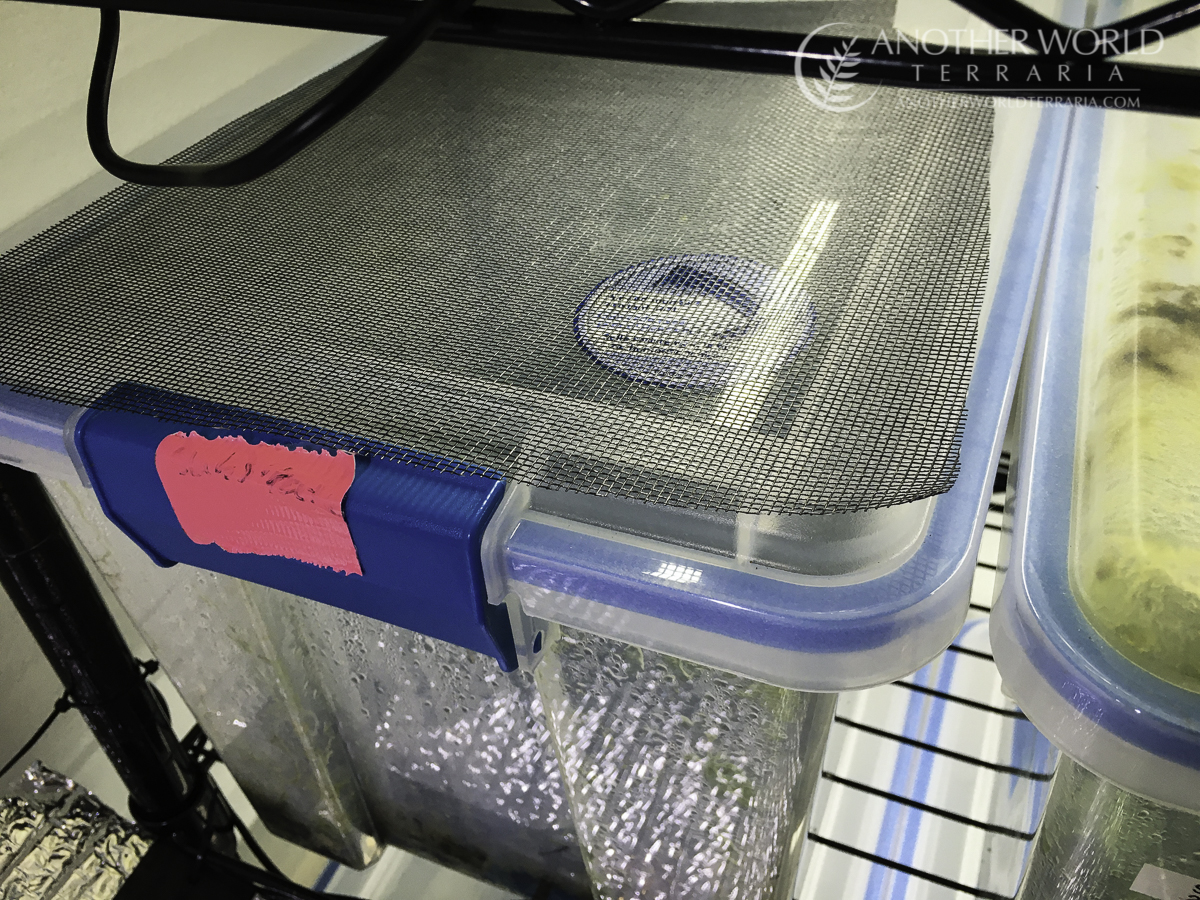
Window screen mesh over bin for shade
-
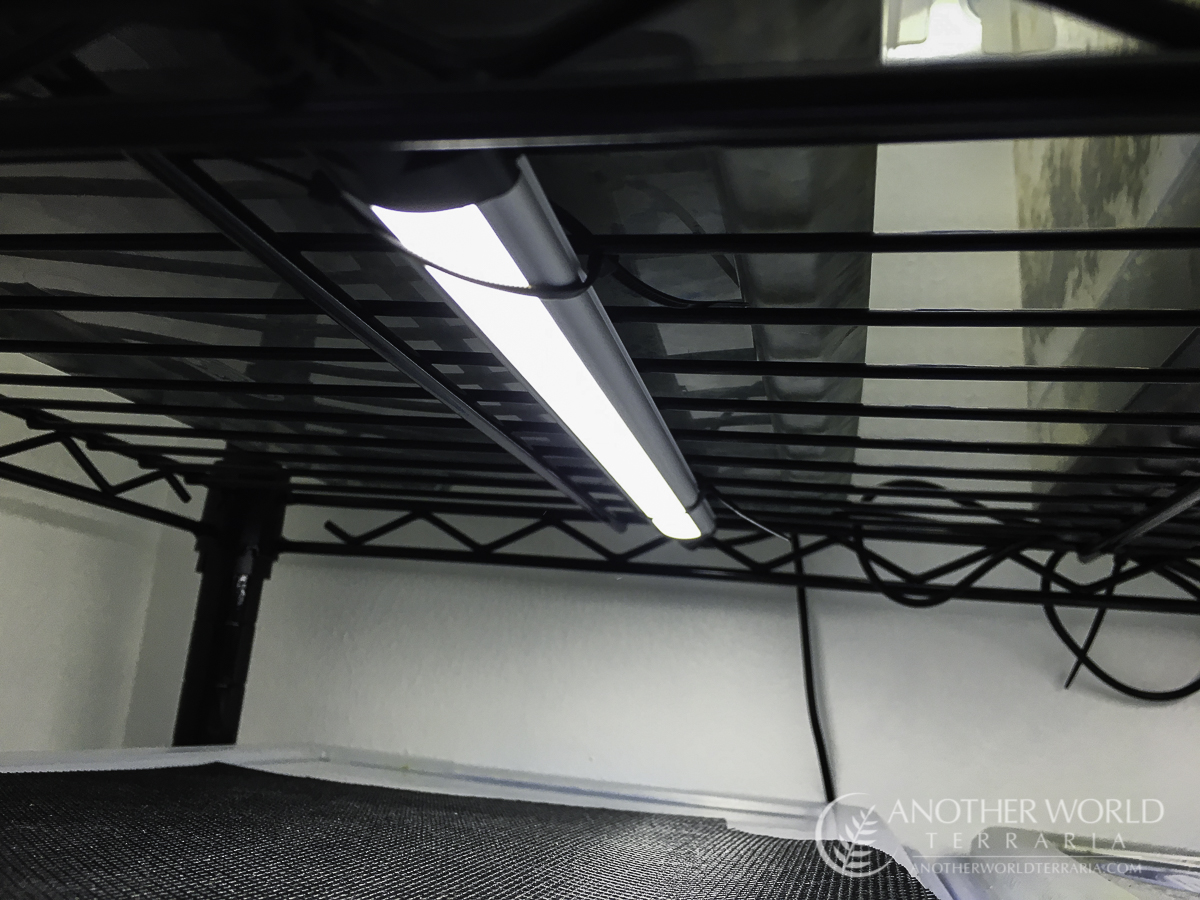
Under-cabinet light on rack
Description
This species is in the family Hymenophyllaceae, the group of plants often referred to as filmy ferns or bristle ferns.
It is commonly identified as Trichomanes javanicum, but the accepted name is now Cephalomanes javanicum.
The common names used for this species are Borneo fern, and less commonly, Aqua Fern.
Cephalomanes is sometimes sold as an aquatic species for aquariums (as noted, it was once dubbed as “Aqua fern”), though it is not a true aquatic. It is capable of growing underwater for a period of time, as it occasionally does in its natural habitat, but it generally cannot survive permanent submersion.
This plant grows in very shaded, and very wet, forested habitats. It is typically found in or near streams and waterfalls, wet slopes, and ravines. It grows on a variety of substrates, most commonly rocks and soil.
Cephalomanes javanicum is categorized as a facultative rheophyte (not a true rheophyte). A true rheophyte is a plant which is adapted to grow in fast, strong, flowing water, where most other plants would not survive. They require these conditions in order to grow properly. A facultative rheophyte, on the other hand, can grow in strong, fast flowing water, when those conditions occur (such as during a flash flood), but it does not require them in order to flourish.
C. javanicum roots are tough, wiry, and perfectly adapted to anchor the plant firmly onto rocks and cliffs where it can withstand flowing water from streams, waterfalls, and flash floods.
Just like many other filmy ferns, this plant is extremely slow growing.
Foliage
As with most filmy ferns, the foliage of C. javanicum is extremely thin (parts of the fronds are often only 1 cell thick), and semi-translucent. Due to this characteristic, the fronds will dessicate (dry out and shrivel up) very quickly unless kept in extremely high humidity. They are also sensitive to bright light and heat.
Growth habit
This fern has an erect rhizome which is stiff and woody, and topped with a rosette of fronds.
Over a long time it can gradually create a clump.
Culture info
Besides the information below which pertains to Cephalomanes javanicum, I also have an Ultimate Guide to How to Grow Filmy Ferns in Terrariums
Substrate
I grow C. javanicum in a mixture of:
- Sand
- Pumice (¼” to ½” grade)
- Fluval Stratum
- Crushed Willow-Oak leaves
I put a thin carpet of Sphagnum over the top of the substrate mix, around the base of the plant.
See the photo gallery for images of the substrate and planting methods.
You can browse the substrates list on my Amazon page to see some of the substrates that I use for my plants and terrariums.
Water
Keep the substrate permanently moist.
This plant does best when misted often, which keeps the humidity up and the thin foliage cool and hydrated.
For watering and misting, use water that is very pure / low in TDS (Total Dissolved Solids), for example, distilled water or RO water.
Humidity
Cephalomanes require extremely high humidity. I recommend keeping them in a sealed plastic or glass container.
I grow mine in pots that are set into a sealed plastic bin, with a bed of sphagnum across the bottom. See the photo gallery for images of the setup. I grow other filmy ferns and tropical bryophytes in this bottom layer of sphagnum.
Check out my grow bin tutorial to learn more.
Light
In its natural habitat, this fern is often found in very deep shade.
It is sensitive to bright light and heat, so keep it in medium to low light to protect the delicate fronds.
I use fiberglass window screen mesh over the lid of the grow bin, so the ferns are shaded a bit. The light that I use is not that bright to begin with, and is somewhat far away.
By the way, I have a video that shows and discusses the lights I use for my plants, as well as a tutorial series for how to set up a grow rack.
Air
I recommend avoiding any moving air or ventilation, both of which can reduce the humidity around the plant, and dry out the delicate foliage. That said, occasional air movement, such as from PC fans on a timer that only go on periodically, should be OK as long as the humidity is close to 100% and the plants are misted frequently.
Temperature
This fern does best in intermediate to warm conditions, favoring warm.
Fertilizer
You can occasionally give a foliar spray of very diluted liquid fertilizer, such as ¼ strength Grow More Urea-free Orchid fertilizer, or use a very limited amount of slow release fertilizer such as just one or two pellets of Osmocote Plus.
See my plant fertilization video for more info, or pick up some of my recommended fertilizers on Amazon.
Propagation
Cephalomanes javanicum grows extremely slowly, in a tight rosette, and does not spread much or produce plantlets like some ferns, which makes it difficult to propagate via vegetative methods such as division.
Propagation from spore may be possible if you are lucky enough to get any fronds with mature sori, and can successfully collect and sow it. Due to the slow growth rate of this species, growing plants from spore will certainly be a lesson in patience.
Other notes
When you first obtain your plant, I recommend clipping off any fronds that are heavily damaged or unhealthy (large portions of the frond missing, brown or black across much of the frond, any parts that are obviously dead, etc). This will do two things: 1. It will reduce the amount of mold that might show up on the decaying foliage, and 2. It will free up some energy for the plant stabilize and then to produce new roots and fronds.
Over time, in some cases, some of the existing fronds (the ones that were on the plant when you first received it) may gradually begin to look unhealthy and then start to die back. As long as all of the cultural requirements are being met and the plant still seems healthy overall, this is nothing to worry about. Simply clip off the older fronds as they start to fade. You should eventually see new fronds forming from the crown of the rhizome. Remember that this plant is extremely slow growing, so it may take many months before you see any new growth.
Where to Buy
References
- Flora of China search for Cephalomanes javanicum
- GBIF search for "Cephalomanes javanicum"
- Kew Plants of the World search for "Cephalomanes javanicum"
- WikiSpecies search for "Cephalomanes javanicum"





